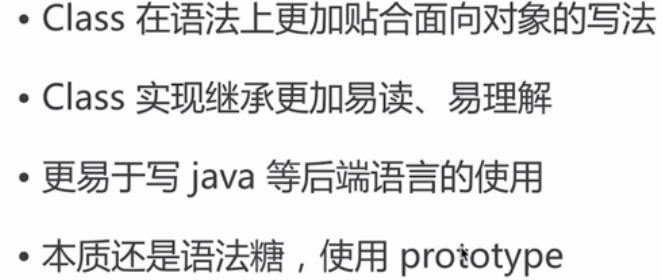语法

- 方法不需要加function,方法之间不需要加分号
class Point { constructor(x, y) { this.x = x; this.y = y; } toString() { return '(' + this.x + ', ' + this.y + ')'; } getX() { return this.x; } }
类的prototype
类的方法都定义在prototype上,但是是不可以枚举的。
class Point { constructor(x, y) { this.x = x; this.y = y; } toString() { return '(' + this.x + ', ' + this.y + ')'; } getX() { return this.x; } } Point.prototype.aa = function (){} console.log(Object.keys(Point.prototype)) //输出['aa']
静态方法
- 静态方法的this指向类,而不是示例
- 静态方法可以和实力方法重名
- 父类的静态方法可可以被子类继承
- class内部只有静态方法,而没有静态属性
class Foo { static bar () { this.baz(); } static baz () { console.log('hello'); } baz () { console.log('world'); } } Foo.bar() // hello // 以下两种写法都无效 class Foo { // 写法一 prop: 2 // 写法二 static prop: 2 } Foo.prop // undefined
继承
- 使用extends关键字实现继承
- 使用super调用父类的构造函数
- super函数
必须在子类的构造函数中调用,否则会报错。 - super函数位于子类构造函数的第一行!因为子类的this必须先通过父类的构造函数完成构造。不调用super方法,子类就得不到this对象。也就是说子类若是有构造函数的话,构造函数的第一行必须是super。
- super当做函数使用时,即super(),只能用在子类的构造函数中。当做对象使用时,即super.方法(),指向父类的原型对象(在静态方法中指向父类),此时注意是调用父类原型上的方法(或者父类的静态方法),而不是实例方法;同时this指向子类的实例。
class ColorPoint extends Point { constructor(x, y, color) { super(x, y); // 调用父类的constructor(x, y) this.color = color; } toString() { return this.color + ' ' + super.toString(); // 调用父类的toString() } }